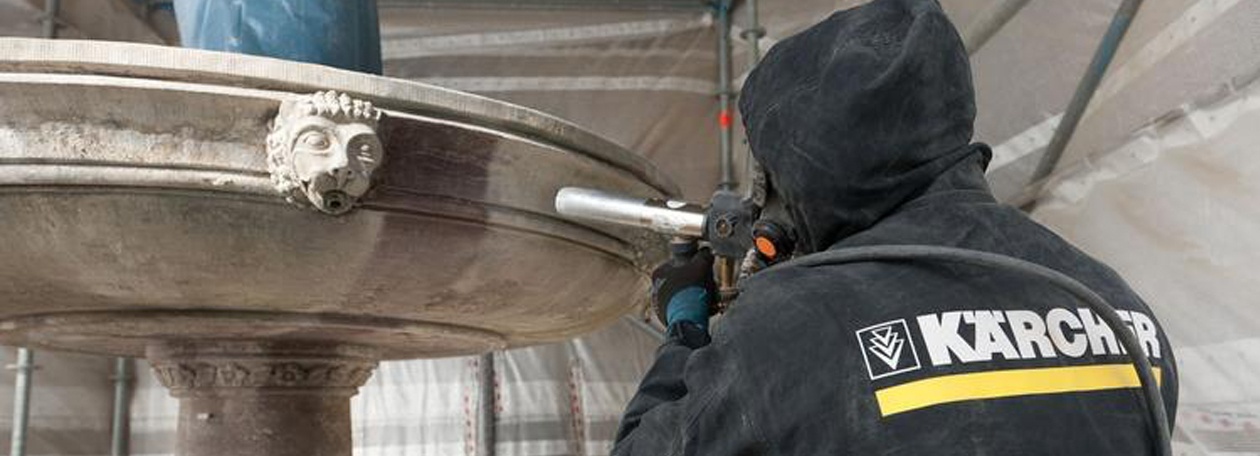Maulbronn Monastery - Maulbronn, Germany

As part of extensive restoration work in Maulbronn Monastery, Kärcher helped to restore the UNESCO World Heritage Site by removing a stubborn layer of limescale from the three-tiered fountain in the northern wing of the cloister. This revealed the original red colour of the sandstone for the first time in centuries.
On the lower and middle tiers of the fountain, layers of limescale up to 1.5 cm thick had formed as a result of the high level of water hardness of around 21 °dH. The first stage of the work involved stripping away the coarse encrustations, in less sensitive places with a hammer and chisel. So as not to damage the original stone, Kärcher then used a particle blasting gun to remove the remaining layer of limescale. Using compressed air and a pressure of 1 - 4 bar, very fine glass powder (grain size 40 - 80 µm, Mohs hardness 6 - 7) was applied to the stone surfaces, gently removing the encrustations. Kärcher employees were able to react rapidly to the varying levels of limescale, as the air pressure and quantity of blasting agent could be precisely adjusted on the handle of the blasting gun. Using this gentle procedure, it was possible to uncover most of the red sandstone, including the surface of the water-spouting lions' heads on the middle tier of the fountain.
The fountain was built around 1500 and subsequently enlarged by two further tiers and a conical lead cap as part of a partial reconstruction in 1878. The fountain was used by the monks for cleaning, ceremonial ablutions and tonsuring.
Architectural styles in Maulbronn Monastery range from the Romantic to the late Gothic. In the Middle Ages, it was an important political, economic and social centre. Following the Reformation, the monastery was converted into a Protestant monastic school (1556). In 1807, it was founded as a Protestant seminary, and remains so to this day. Maulbronn Monastery has featured on the UNESCO List of World Heritage Sites since 1993.




